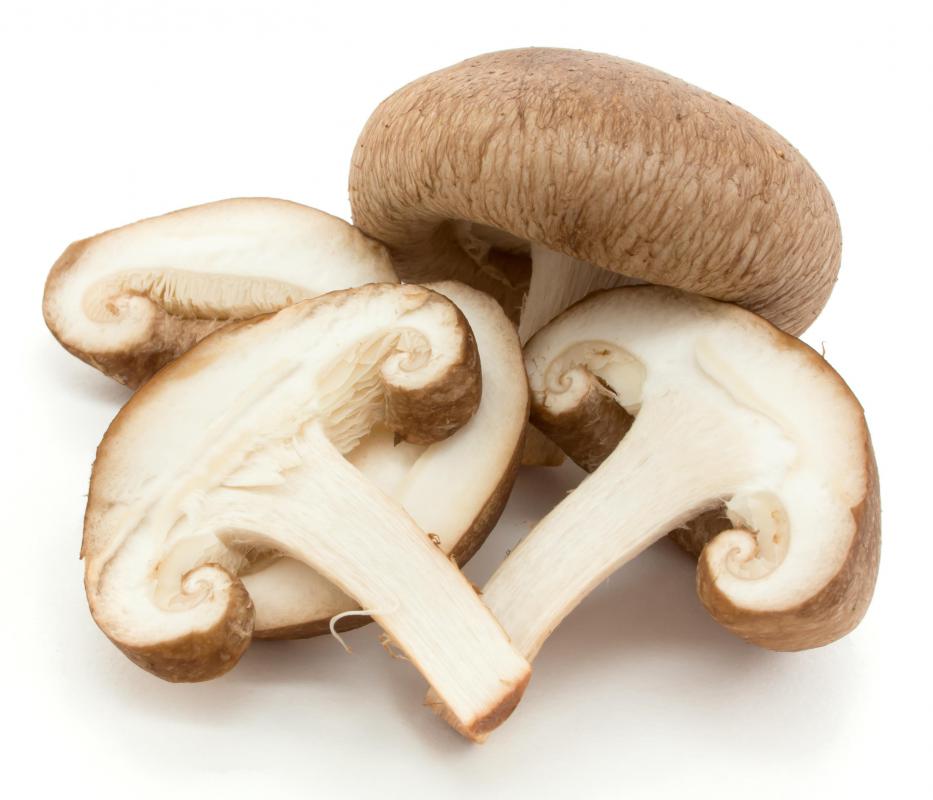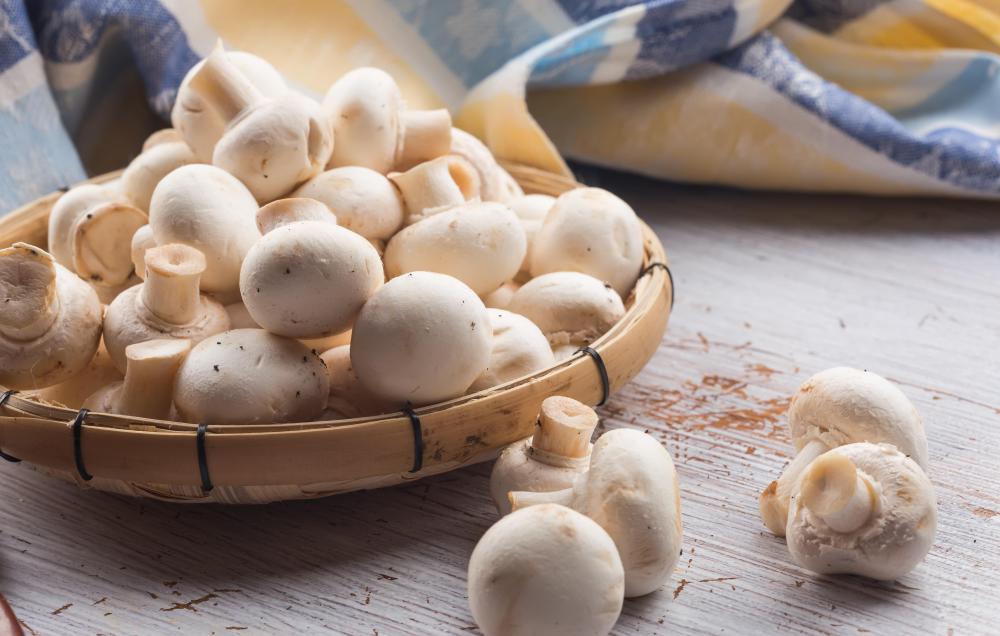At DelightedCooking, we're committed to delivering accurate, trustworthy information. Our expert-authored content is rigorously fact-checked and sourced from credible authorities. Discover how we uphold the highest standards in providing you with reliable knowledge.
What are the Different Types of Mushrooms?
Mushrooms are fleshy growths of fungus that are used in foods throughout the world. There are many thousands of types of mushrooms. Only a small percentage of them are poisonous, and dozens of different types of mushrooms are not only edible but are considered desirable for eating. Among the most popular of the different types of mushrooms that are used in foods are white mushrooms, morels, truffles and portabella mushrooms. Other popular types include the chanterelle, shiitake, oyster and enoki.
White mushrooms

The most common type of mushroom in many grocery stores is the Agaricus bisporus. It is white or light brown and has many common names, such as a white mushroom, table mushroom, Italian mushroom or white button. This mushroom has a stalk, a dome-shaped top and a generally mild taste. White mushrooms are available fresh, dried or canned.
Morels
These cone-shaped mushrooms vary in color from tan to brown. Unlike white mushrooms, which have a more smooth surface, morels have a porous, sponge-like appearance above the stalk. They also have a stronger flavor, which has been described as earthy, smoky or even nutty. These mushrooms typically are more expensive than white mushrooms. When harvested from the wild, they should be cleaned thoroughly because of their porous surface.
Truffles

Truffles are quite rare and expensive, so they are considered a delicacy by many people. Technically, they are not actual mushrooms, but they are closely related. Truffles have a bumpy, uneven appearance. They have a strong, earthy or even meaty taste, and the darker the truffle, the stronger the taste.
Portabella
Portabella mushrooms are similar to white mushrooms but are much larger and more brown in color. They are harvested when they are very mature, which gives them a more dense texture and a deeper flavor. When they are harvested before they reach full maturity, they are called crimini mushrooms, which are commonly substituted for white mushrooms when a slightly stronger is desired.
Chanterelle

These mushrooms have a much different look, rising from a white or yellowish stalk and opening into a vase-like or flower-like shape in bright yellow or orange hues. They have a delicate texture, so care must be taken when they are cooked, to avoid having them become tough. Their taste has been described as nutty. Chanterelles are especially popular for use in salads and appetizers.
Shiitake

Shiitake mushrooms are mostly brown and have wide, umbrella-shaped tops. They have a dense texture and meaty taste, so they often are used as a meat substitute in vegetarian dishes. Shiitake mushrooms are one of several different types of mushrooms that are popular in stir fries or as a cooked side dish.
Oyster
These mushrooms get their name from their appearance and their flavor. They typically are white, beige or gray and are found in the wild growing on logs or trees. Their stems have broad gills and rise into a flat, mostly uneven top that resembles an oyster. These mushrooms have a soft texture and delicate flavor that some people compare with seafood. They are especially popular when fried.
Enoki
Enoki mushrooms grow in bunches. They have long, slender stems and small, white caps. These crisp mushrooms have a mild flavor that has been described as somewhat fruity. They are usually eaten raw on salads or sandwiches.
AS FEATURED ON:
AS FEATURED ON:



















Discussion Comments
I don't wash them. I just peel off the outer layer of skin and they are fine to cook or eat raw. Any way you want, try it.
You don't wash mushrooms for fear of them getting water logged. Most mushrooms have delicate flavor, the reason you don't wash mushrooms is so you don't ruin the flavor. Just gently brush them off with a soft bristled brush (like a paint brush) to remove the dirt. If the stems are hard or feel a little wood like, trim them with a knife on bigger varieties, for more delicate specimens use scissors.
Take some mushrooms and weigh them. Let us say you have 30 grams. Wash them thoroughly and let them dry on paper towels. Now weigh them again. It is doubtful that you will have increased the weight by more than a gram or two. This will shoot down the nonsense that people repeat about not washing mushrooms when all they are doing is repeating what they have been told.
If mushrooms have dust or soil or mud, what do we do? We buy from market (I am from Myanmar, formerly Burma). In the local market we have that type of mushroom available. I did not know that we must not wash the mushroom.
My father would go hunting for morel mushrooms in fields and bring them home where my mother would cook them and add them to the gravy in our Sunday dinner of roast beef, pork or chicken. They were small usually about 1 - 1 1/2 inches. I loved them, but am afraid to hunt for them myself. My dad found them secretly and never took me when he went.
mushrooms should never be washed as they become waterlogged, but never fear the mushrooms you buy in the market are grown in sterile soil and in controlled environments so if a bit of soil should cling, well, as my grandmother used to say "you gotta eat your peck of dirt before you die". of course if you pick them yourself then, unless you know absolutely sure what you are doing, the danger doesn't lie in a bit of dirt.
Mushrooms should be washed using a wet paper towel and then laid on dry paper towel to let the water soak into the paper towel. If the mushrooms have some damaged areas, you can just peel or cut them off.
Never wash mushrooms, it ruins them. Just give them a wipe, and if it has got a dot of greenfly piddle on it, it's not going to kill you is it?
washing mushrooms should be recommended due pests or other insects that must have touched them and probably secreted some fluid.
What is the best way to clean mushrooms? I heard that they shouldn't be washed because that leaves them too water soaked. Rather, I heard that just dusting the tops of them with a damp cloth is the way to go. But this approach seems like it wouldn't get all the dirt off them.
Post your comments